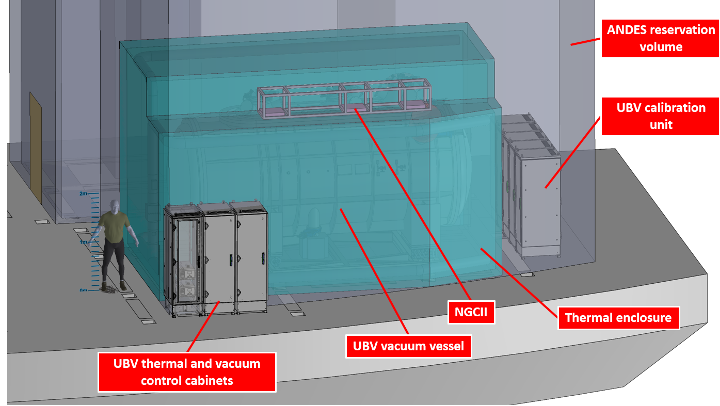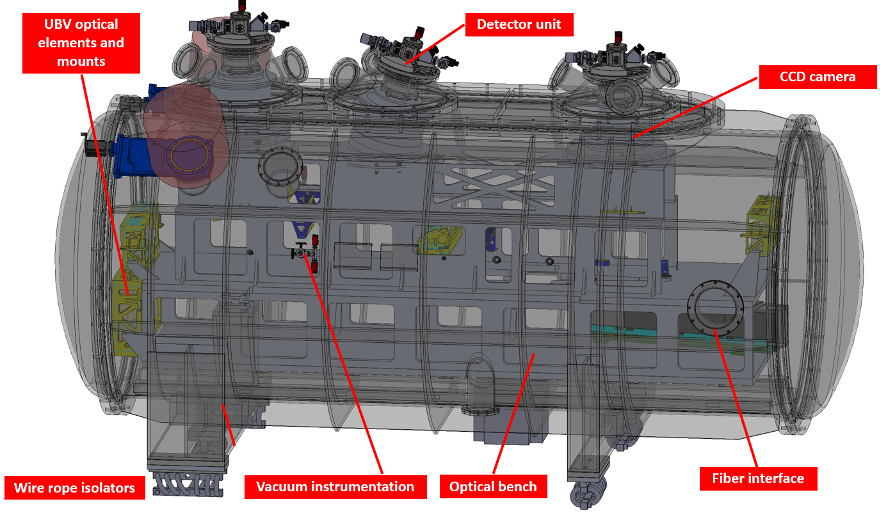UBV Spectrograph
The UBV spectrograph (US) is one of the four ANDES spectrographs,
covering the bluest wavelength range from 350 to 635 nm. ANDES is an instrument under design for high-resolution spectral measurements at ELT. US is being engineered as a part of ANDES to guarantee the specified resolution in the U (goal), B and V bands of the spectrum (350 to 635 nm).

It is a challenging optical system demanding tight tolerances, high mechanical and thermal stability. Achieving the instrument performance in the telescope environment is the key to harvest all the scientific results ELT will enable.
The UBV spectrograph must be under stable pressure vacuum (Fig. 2) and the temperature is kept constant down to 1/1000 of a degree C. The optical table, the structure that holds optical elements in position, must be reinforced to ensure static load and vibrations will not affect the optical path during or between the observations. As the UBV spectrograph is mounted on the telescope, the mechanical stability requirements mandate that the wobble due to the telescope rotation needs to be actively compensated for.
Moreover, the spectrograph is designed to withstand potential earthquake events.

US receives object, sky and calibration light in its spectral band from the Front-End through a Fibre Link. An echelle grating and a cross disperser (per band) map the light into a two-dimensional spectrum. Each of the bands has its optical camera to image and capture the spectrum with a pixel array detector (CCD). More resolution means less light per pixel, which in turn requires a state-of-the-art sensor and cryogenic cooling to reduce its thermal noise.